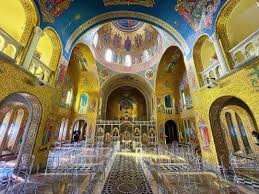Fountain of Four Rivers a source of entertainment: Ambassador Stefano Pontecorvo

Islamabad: Italy’s Ambassador to Pakistan Stefano Pontecorvo Sunday said the four rivers in Bernini’s fountain are a source of entertainment.
The four rivers in Bernini’s fountain are the Nile, Rio de la Plata, Danube and Ganges, the envoy elaborated.
“According to the legend none of them look at the Curch of St Agnes in front of it designed by Bernini’s arch rival Borromini, to maintain it was too ugly to look at. Rivalries between architects,” he added.
Rome’s love affair with fountains goes back to antiquity, whilst the city today can boast a collection of public fountains that has no parallel to any other city in the world! In Baroque Rome, fountains were seen as a reflection of the generosity associated with papal families.
The play of water over marble, no matter how humble the design, provided local Romans with entertainments and a much needed, secure supply of water which could easily be carried home.
The popes saw this art form as an excellent PR exercise and exploited the concept to the advantage of their standing with the local people.
Pope, Innocent X Pamphilj (reigned 1644-1655) eventually commissioned Gian Lorenzo Bernini to sculpt Rome’s greatest achievement in this genre, the Fountain of the Four Rivers, located in Piazza Navona, the ancient stadium of the Emperor Domitian and the site of the Pamphilj family palace.
As early as 1647 Innocent had decided to erect an obelisk as a central ornament for the piazza in tandem with a fountain, as he methodically cleaned up and beautified what was one of Rome’s most squalid neighbourhoods!
A competition was announced for design submissions by the leading artists of the day, with the exception of the gifted Bernini, who at the time was out of favor because of his close association with the previous papal regime, the Barberini.
The greatest artist of the day was not to be deterred however, arranging for the model of his fountain design to be seen by the Pope, upon which Innocent immediately ordered Bernini to begin the execution of his design, reputedly saying afterwards, “that the only way to avoid employing Bernini was not to see his designs.”
The Fountain of the Four Rivers depicts gods of the four great rivers in the four continents as then recognized by the Renaissance geographers: the Nile in Africa, the Ganges in Asia, the Danube in Europe and the Río de la Plata in America.
Each location is further enhanced by animals and plants of that country. The Ganges carries a long oar, representing the river’s navigability. The Nile’s head is draped with a loose piece of cloth, meaning that no one at that time knew exactly where the Nile’s source was.
The Danube touches the Papal coat of arms, since it is the largest river closest to Rome. And the Río de la Plata is sitting on a pile of coins, a symbol of the riches America might offer to Europe (the word plata means silver in Spanish).
Each River god is semi-prostrate, in awe of the central tower, epitomized by the slender Egyptian obelisk (built for the Roman Serapeum in AD 81), symbolizing Papal power and surmounted by the Pamphilj symbol of the dove.
The Fountain of the Four rivers is a theater in the round, whose leading actor is the movement and sound of water splashing over and cascading down a mountain of travertine marble. The masterpiece was finally unveiled to the world on June 12, 1651, to joyous celebration and the inevitable criticisms of the day. Then as today the Fountain of the Four Rivers continues to amaze and entertain visitors to Rome. Bernini triumphs yet again!





